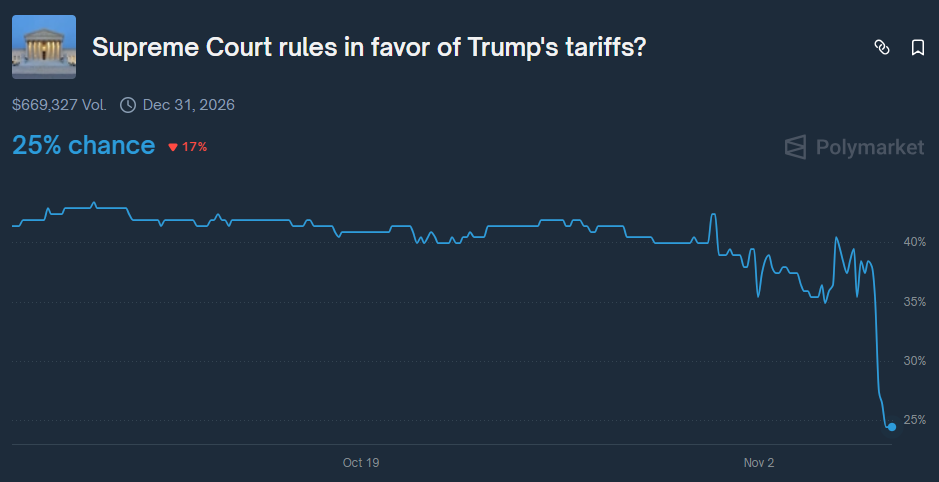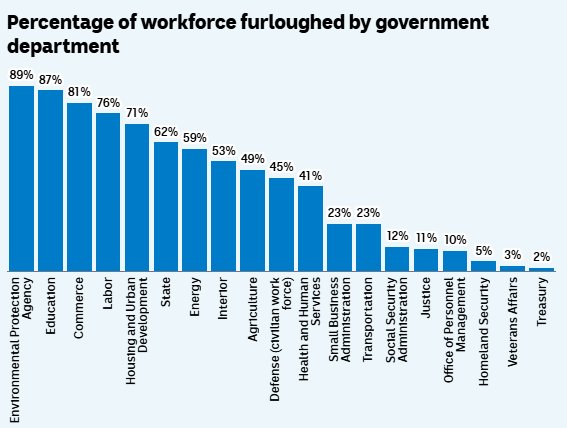ข่าวสารตลาด & มุมมองเชิงลึก
ก้าวนำตลาดด้วยมุมมองเชิงลึกจากผู้เชี่ยวชาญ ข่าวสาร และการวิเคราะห์ทางเทคนิค เพื่อเป็นแนวทางในการตัดสินใจซื้อขายของคุณ.

Artificial intelligence stocks have begun to waver slightly, experiencing a selloff period in the first week of this month. The Nasdaq has fallen approximately 2%, wiping out around $500 billion in market value from top technology companies.

Palantir Technologies dropped nearly 8% despite beating Wall Street estimates and issuing strong guidance, highlighting growing investor concerns about stretched valuations in the AI sector.
Nvidia shares also fell roughly 4%, while the broader selloff extended to Asian markets, which experienced some of their sharpest declines since April.
Wall Street executives, including Morgan Stanley CEO Ted Pick and Goldman Sachs CEO David Solomon, warned of potential 10-20% drawdowns in equity markets over the coming year.
And Michael Burry, famous for predicting the 2008 housing crisis, recently revealed his $1.1 billion bet against both Nvidia and Palantir, further pushing the narrative that the AI rally may be overextended.
As we near 2026, the sentiment around AI is seemingly starting to shift, with investors beginning to seek evidence of tangible returns on the massive investments flowing into AI, rather than simply betting on future potential.
However, despite the recent turbulence, many are simply characterising this pullback as "healthy" profit-taking rather than a fundamental reassessment of AI's value.
Supreme Court Raises Doubts About Trump’s Tariffs
The US Supreme Court heard arguments overnight on the legality of President Donald Trump's "liberation day" tariffs, with judges from both sides of the political spectrum expressing scepticism about the presidential authority being claimed.
Trump has relied on a 1970s-era emergency law, the International Emergency Economic Powers Act (IEEPA), to impose sweeping tariffs on goods imported into the US.
At the centre of the case are two core questions: whether the IEEPA authorises these sweeping tariffs, and if so, whether Trump’s implementation is constitutional.
Chief Justice John Roberts and Justice Amy Coney Barrett indicated they may be inclined to strike down or curb the majority of the tariffs, while Justice Brett Kavanaugh questioned why no president before Trump had used this authority.
Prediction markets saw the probability of the court upholding the tariffs drop from 40% to 25% after the hearing.

The US government has collected $151 billion from customs duties in the second half of 2025 alone, a nearly 300% increase over the same period in 2024.
Should the court rule against the tariffs, potential refunds could reach approximately $100 billion.
The court has not indicated a date on which it will issue its final ruling, though the Trump administration has requested an expedited decision.
Shutdown Becomes Longest in US History
The US government shutdown entered its 36th day today, officially becoming the longest in history. It surpasses the previous 35-day record set during Trump's first term from December 2018 to January 2019.
The Senate has failed 14 times to advance spending legislation, falling short of the 60-vote supermajority by five votes in the most recent vote.
So far, approximately 670,000 federal employees have been furloughed, and 730,000 are currently working without pay. Over 1.3 million active-duty military personnel and 750,000 National Guard and reserve personnel are also working unpaid.

SNAP food stamp benefits ran out of funding on November 1 — something 42 million Americans rely on weekly. However, the Trump administration has committed to partial payments to subsidise the benefits, though delivery could take several weeks.
Flight disruptions have affected 3.2 million passengers, with staffing shortages hitting more than half of the nation's 30 major airports. Nearly 80% of New York's air traffic controllers are absent.
From a market perspective, each week of shutdown reduces GDP by approximately 0.1%. The Congressional Budget Office estimates the total cost of the shutdown will be between $7 billion and $14 billion, with the higher figure assuming an eight-week duration.
Consumer spending could drop by $30 billion if the eight-week duration is reached, according to White House economists, with potential GDP impacts of up to 2 percentage points total.


The Relative Strength Index (RSI) is an oscillator type of indicator, designed to illustrate the momentum related to a price movement of a currency pair or CFD. In this brief article we aim to outline what this indictor may tell you about market sentiment, and along with other indicators assist in your decision-making. As with most oscillator type of indicator, the RSI can move between two key points (0-100).
The major aim of the RSI is to gauge whether a particular asset, in our context a forex pair or CFD, is overbought or oversold, and the associated key levels are below 30 (when it is classed as “Oversold”) and above 70 (where it is classed as “overbought”). To bring up an RSI chart on your MT4/5 platform it is simply a case of finding the RSI in your list of indicators in the Navigation box and clicking and dragging it into your chart area. The diagram below illustrates this on a 30-minute chart.
It is generally thought that if the RSI moves into either of these two zones then a change may be imminent. Most commonly the RSI may be used as part of entry decision making. Traders may use this as an additional tick (when other indicators suggest entry) to make sure they do not enter a long trade on an overbought currency pair, or short trade on an oversold currency pair.
Therefore, when articulating this in your trading plan it may read something like the following: a. I will refrain from entry into a long trade if the RSI has moved above 70 on the last trading bar. b. I will refrain from entry into a short trade if the RSI has moved below 30 on the last trading bar.
Less frequently but logically, if one accepts this premise that a move into either of the previous described zones then a trend change may be imminent. It could also be used as a “warning” to potentially exit from an open trade. Traders who wish to explore this in their own trading could: a.
Tighten a trail stop to within a specified number of pips from current price e.g., 10 Pips. or b. Exit the trade entirely. Of course, in either case and with any indicators we discuss, back-testing it with previous trades to ascertain any change in outcomes can be performed to justify a prospective test.
Finally, after gathering a critical mass of trade examples exploring if this would make a difference, this could provide the evidence to suggest whether you should (or should not if there is no difference) formally add to your trading plan. For a live look at how indictors may be used in the reality of trading decision making, why not join our “Inner Circle” group with regular weekly webinars on a range of topic including that of indicators. It would be great to have you as part of the group.
CLICK HERE to enroll for the next inner circle session. This article is written by an external Analyst and is based on his independent analysis. He remains fully responsible for the views expressed as well as any remaining error or omissions.
Trading Forex and Derivatives carries a high level of risk.


Definition of Moving Average In trading, moving averages are often used to smooth out price data to generate trend-following indicators. The most commonly used types are the Simple Moving Average (SMA) and the Exponential Moving Average (EMA). A Simple Moving Average is calculated by defining a period, e.g., 10—or, in other words, the last 10 candles—adding these last 10 close prices, and then dividing by 10.
This is recalculated every time a candle closes and may be plotted as a single line on a price chart. An Exponential Moving Average is often preferred by many traders because it gives more weight to recent prices and appears to be more responsive to price changes than the Simple Moving Average. Ways to Use Moving Averages in Trading Decisions – An Overview Although, like most indicators on a trading platform, a moving average is 'lagging' in terms of the information it provides, its ability to indicate trend direction and changes makes it popular.
For entry points, traders often use two different moving averages, such as a 10 and 20 EMA on a chart. When these crossover so that the 10 is higher than the 20, for example, it may be indicative of a new uptrend (and vice versa for a potential downtrend). Larger moving averages, like the 200 and 50, are commonly observed, particularly when these cross.
For instance, the 50 crossing below the 200 is termed the "death cross" and could indicate a long-term uptrend changing to a downtrend. For exit strategies, rather than waiting for a moving average cross, a more timely exit signal might be a cross between price and a moving average. This is the major focus of this article, and we will discuss this approach along with a few considerations.
Using Price and Moving Average as a Trail Stop So let us first clarify what we mean by a trail stop or trailing stop. Traditionally, a trail stop is a type of stop-loss order that moves with the market price as a trade progresses in your desired direction. For example, if you buy a stock at $100 with an initial stop of $90 and the price moves up to $110, you may "trail" your initial stop from $90 up to $102.
This means that if the trade turns around and moves back down to $102, triggering your trail stop, you would still make a minimum profit of $2 per share, even if the price continues to drop back to $90. If the price doesn't drop but continues to rise, you can move your trail stop higher, for example, to $115, then $120, and so on, until the price eventually falls and triggers an exit. In simple terms, a trail stop locks in profit and manages the risk of giving all potential profit back to the market as the price moves in your desired direction.
Many approaches systematize the use of a trail stop as part of a trading plan, rather than simply using an arbitrary price. One of these approaches is to use a moving average as a trail stop, which we will now discuss in more detail. Moving Average as a Trail Stop Using a moving average as a trail stop means that instead of setting your stop-loss at a fixed dollar amount below the market price, you set it at the level of a particular moving average.
As the moving average changes, your trail stop will move with it. For example, consider the chart below where we have entered a short gold trade on an hourly timeframe at point "A," anticipating a potential trend reversal. The yellow line on the chart is a 10EMA.
The price moves in our desired direction and closes above our yellow line (or the 10 EMA) at point "B," locking in a good profit for this trade. As you can also see, a candle's price crossed temporarily over the 10EMA at point "C" but closed below it. This is an important consideration that we will touch upon later.
Considerations for Traders There are several factors to consider when deciding which approach suits your individual trading style, and these should be tested to find the optimal strategy for you. Which MA Type?: We've already discussed the major differences between Simple and Exponential Moving Averages. Many traders, particularly those trading shorter timeframes, tend to prefer the EMA due to its greater responsiveness to trend changes.
However, just because a particular approach is right for many doesn't mean it can't be different for you. Which Period MA?: This is probably the most debated consideration. A longer EMA, e.g., 20 instead of 10, will require a more significant price drop to trigger, meaning you may give more back to the market if the drop continues.
However, this must be balanced against the possibility that any uptrend may pause and even retrace for a period before resuming its climb. MA Touch or Close?: Another key debate is whether a trail stop using a moving average should be triggered by any touch of that moving average at any time, or whether to wait for a close price through the MA. Both approaches have pros and cons, which need to be weighed carefully.
In Summary There's no doubt that the concept of using a trail stop merits exploration for any trader. Price/MA cross is a relatively easy concept to understand and implement and can improve trading outcomes irrespective of the "fine-tuning" considerations discussed. Your challenge is clear: thorough, ongoing testing is essential to refine your choice and find the optimal method for you.
Strategies Simple Moving Average (SMA) Strategy: Utilizing a 50-day SMA as a trail stop could be effective for longer-term trades. If the price drops below the 50-day SMA, you could trigger a sell order. Exponential Moving Average (EMA) Strategy: For more sensitive, shorter-term trading, a 20-day EMA could be used as a trail stop.
The EMA gives more weight to recent prices and thus responds more quickly to price changes. Price Percentage and MA Combination: You could set a rule where the trail stop triggers if the price drops a certain percentage below the moving average. For example, if the 50-day


In this climate of phishing and scam websites and messages, we’d like to take this opportunity to remind our clients of the official GO Markets websites. Scammers at times will register similar domains, with minor spelling differences, and copy our website design in an attempt to deceive visitors. These copies can sometimes be very convincing.
GO Markets' genuine websites are www.gomarkets.com, www.gomarkets.eu and www.gomarkets.ltd If in any doubt about a website, simply visit www.gomarkets.com directly. GO Markets is also on a number of Social Media platforms; Facebook, Instagram, LinkedIn, Twitter, WeChat and YouTube. When following links from Social Media pages, please ensure you are directed to one of the legitimate websites above, as scammers may also set up fake Social Media profiles in an attempt to direct users to false websites.
As always, if you have any concerns, please reach out to our Customer Support team or your Account Manager directly.


In the lead-up to the European Central Bank (ECB) interest rate decision this week, the market has seen significant turmoil. Firstly from the Silicon Valley Bank (SVB) failure, followed by the news that Credit Suisse’s largest financial backer is unlikely to provide further financial support. This led to Credit Suisse stock plunging by more than 28% and taking with it, the Eurozone bond yields and the Euro.
President Lagarde from the ECB had been signaling to the market, on multiple occasions, since the previous meeting that the ECB will hike rates by 50bps at the March meeting. However, with the current uncertainty especially with the banking failures seen in the US, the market has begun pricing in the possibility that the ECB hikes rates with more caution by deciding on 35bps rather than 50bps at the March meeting. This has led the EURUSD to reverse all recent gains, turning down from the 1.0750 price level to trade along the key support level of 1.0540.
If the ECB releases a decision to hike rates by less than 50bps, this would be a major red flag to the market and also indicate a slowdown in its path of monetary policy tightening, which could see the EURUSD continue with the current downward momentum. If the price breaks below the current support level and the interim price level of 1.0440, the EURUSD could see significant moves downside, supported by the cross-over of the MACD, with the next key support level at 1.0220, which was the previous swing low in November 2022. Alternatively, if the ECB maintains its previous stance and decides to hike rates by 50bps at this meeting, the EURUSD could see brief relief.
However, it would be unlikely that the price would reverse significantly, with the current market uncertainties likely to maintain the downward pressures and the 1.08 resistance level likely to hold firm.


Walgreens Boots Alliance Inc. (NASDAQ: WBA) announced the latest financial results before the market open in the US on Tuesday. The company beat both revenue and earnings per share (EPS) estimates. Walgreens reported revenue of $34.862 billion for the quarter ending February 28, 2023 (up by 3.3% year-over-year) vs. $33.528 billion expected.
EPS reported at $1.16 per share (down by 27.2% year-over-year) vs. $1.103 per share estimate. CEO commentary "WBA exited a solid second quarter with acceleration in February, adding to our confidence in driving strong growth in the second half of the year. With the closing of VillageMD's acquisition of Summit Health, WBA is now one of the largest players in primary care, with best-in-class assets across the care continuum.
Both Walgreens and Boots are performing well by delivering compelling value to consumers, playing a critical role as community health destinations, and successfully navigating a challenging environment. We will continue to take bold actions to create sustainable long-term shareholder value," CEO of the company, Rosalind Brewer said in a press release. The stock was up by around 1% in pre-market trading following the latest results.
The stock is down by 11.83% year-to-date at $32.96 a share. Stock performance 1 month: -7.29% 3 months: -14.02% Year-to-date: -11.83% 1 year: -31.12% Walgreens Boots Alliance price targets Barclays: $43 Evercore ISI Group: $35 Loop Capital: $45 Morgan Stanley: $37 Truist Securities: $42 JP Morgan: $40 Credit Suisse: $41 Mizuho: $41 Cowen & Co.: $54 Deutsche Bank: $50 Walgreens Boots Alliance Inc. is the 605 th largest company in the world with a market cap of $28.41 billion. You can trade Walgreens Boots Alliance Inc. (NASDAQ: WBA) and many other stocks from the NYSE, NASDAQ, HKEX, ASX, LSE and DE with GO Markets as a Share CFD.
Sources: Walgreens Boots Alliance Inc., TradingView, MarketWatch, MetaTrader 5, Benzinga, CompaniesMarketCap


Walmart Inc. (NYSE:WMT) announced Q4 and full-year financial results before the market open on Wall Street on Tuesday. World’s largest supermarket chain posted solid results for the quarter – beating both revenue and earnings per share (EPS) estimates. The company reported revenue of $164.048 billion (up by 7.3% year-over-year) vs. $159.759 billion expected.
EPS reported at $1.71 per share for the quarter vs. $1.518 EPS estimate. Full-year revenues reached $611.3 billion (up by 6.7% vs. a year prior) and EPS at $6.29 per share. CEO commentary ''We’re excited about our momentum.
The team delivered a strong quarter to finish the year, and as our results in the last two quarters show, they acted quickly and aggressively to address the inventory and cost challenges we faced last year. We built momentum in the third quarter and that continues. We are well-positioned to start this fiscal year,'' Doug McMillon, CEO of Walmart said in a press release following the latest results.
Stock reaction The results did not have a big impact on the share price Tuesday. The stock was up by 0.61% at $147.21 a share. Stock performance 1 month: +3.29% 3 months: -2.53% Year-to-date: +3.91% 1 year: +6.77% Walmart stock price targets Cowen & Co.: $180 Telsey Advisory Group: $165 Morgan Stanley: $161 Gordon Haskett: $155 Barclays: $159 Oppenheimer: $160 Tigress Financial: $176 UBS: $168 Credit Suisse: $170 Bernstein: $159 Walmart is the 18 th largest company in the world with a market cap of $397.31 billion.
You can trade Walmart Inc. (NYSE:WMT) and many other stocks from the NYSE, NASDAQ, HKEX, ASX, LSE and DE with GO Markets as a Share CFD. Sources: Walmart, TradingView, MarketWatch, MetaTrader 5, Benzinga, CompaniesMarketCap

